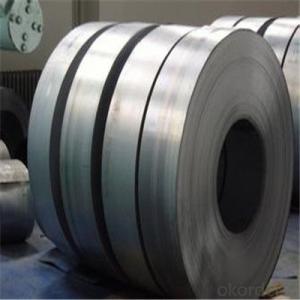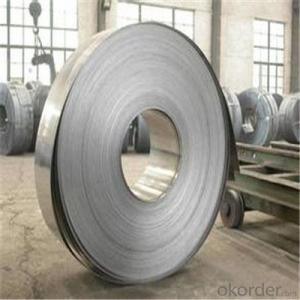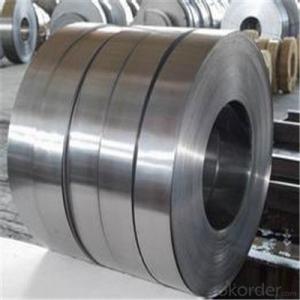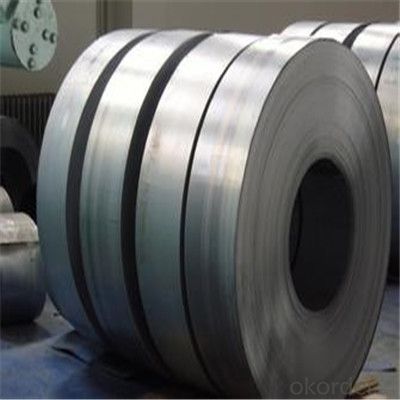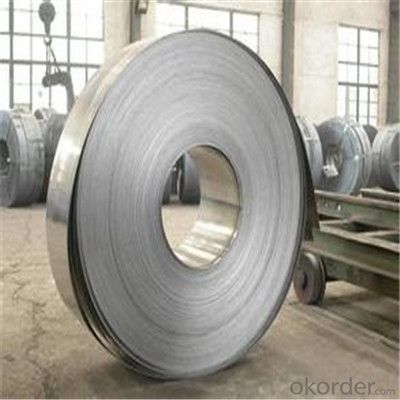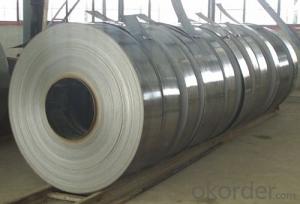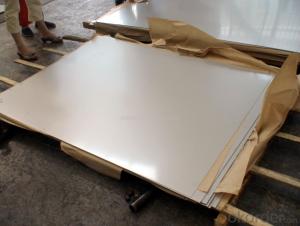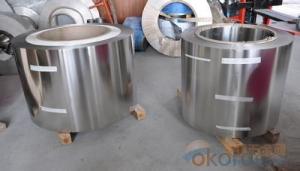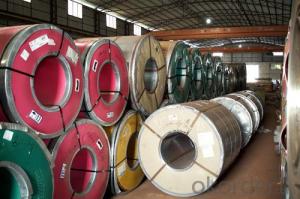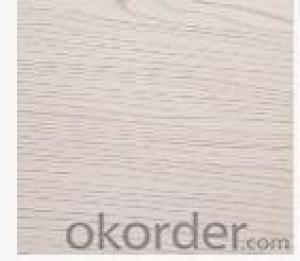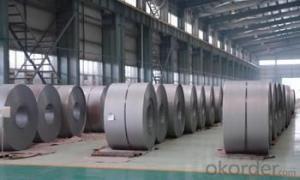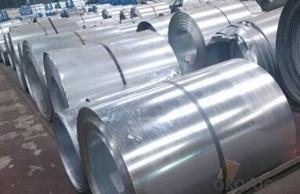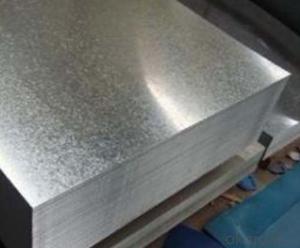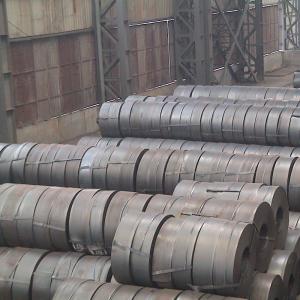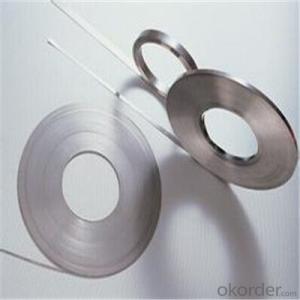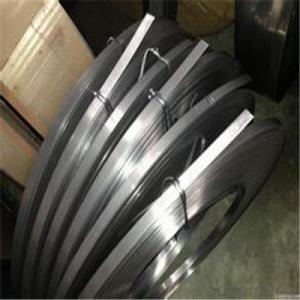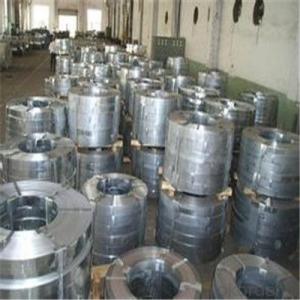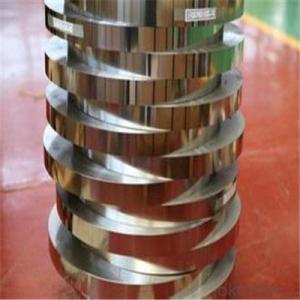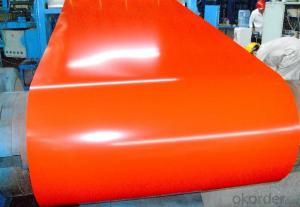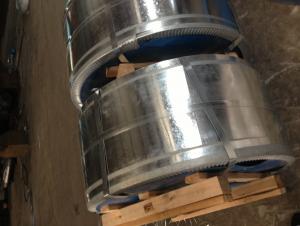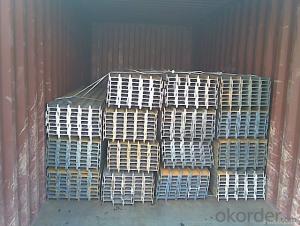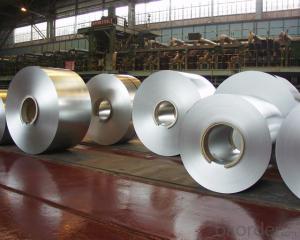Hot Rolled Steel Strip Coils Q195 Q235 Professional Manufacturer in China
- Loading Port:
- Shanghai
- Payment Terms:
- TT OR LC
- Min Order Qty:
- 66 m.t.
- Supply Capability:
- 4433222 m.t./month
OKorder Service Pledge
OKorder Financial Service
You Might Also Like
Specification
Applications of Steel Strip Coils:
1:Chemical industry equipment, Industrial tanks
2:Medical Instruments,Tableware, Kitchen utensil,kitchen ware
3:Architectural purpose, Milk & Food processing facilities
4:Hospital Equipment, interior Exterior decoration for building
5:Architectural purposes, escalators, kitchen ware,vehicles
Festures of Steel Strip Coils:
1. Each coil is closely covered by oil paper or plastic film.
2. Outside it is firmly packed with sack cloth or compound paper.
3. Steel strap or PP strap to pack the outside to ensure safety.
Specifications of Steel Strip Coils:
| Description | Hot Rolled Steel Strip |
| Brand | Tianjin Metallurgical No.Steel Group |
| Specification | 1.2-6.0mm*70mm |
| Standard | AISI,ASTM,BS,DIN,GB,JIS |
| Material | Q195,Q215,Q215B,Q235,Q235B |
| Application | Widly used in welding steel pipes, and bicycle making etc. |
| Certificates | BV,SGS,ISO etc. |
| MOQ | 20 tons or according to customers’ requirement. |
| Port of Delivery | Tianjin Port of China |
| Remarks | We can provide qualify goods,competitive price and speedy delivery |
Images of Steel Strip Coils:
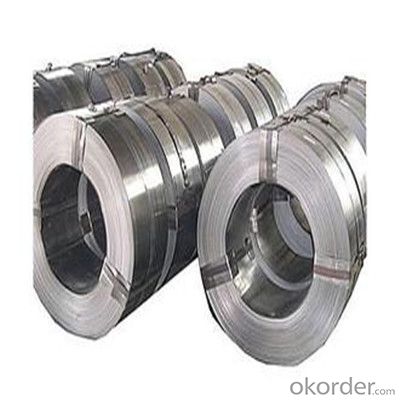
FAQ
1.What's your MOQ?
25MT, it is for one container.
2.Do you have QC teams?
Yeah, sure, our QC team is very important, they will keep the quality control for our products.
3. What's your normal delivery time?
Our delivery time about 10-20days for standard sizes, if you have other requirements like hardness and width ,it is about 20-40days.
- Q: Can steel strips be used for making surgical instruments?
- Yes, steel strips can be used for making surgical instruments. Steel strips are commonly used in the manufacturing of various surgical instruments due to their strength, durability, and resistance to corrosion. Their versatility allows for precise shaping and forming of surgical tools, ensuring high-quality and reliable instruments for medical procedures.
- Q: What are the different methods for bending steel strips?
- There are several methods for bending steel strips, including press brake bending, roll bending, rotary draw bending, and induction bending.
- Q: Is there any difference between galvanized steel strip and galvanized sheet?
- Galvanized strip is the same as galvanized sheet, but it has a narrow width and a roll in a pan. Galvanized sheet is also used to flatten the material. The width is 1000~1800., and the strip is almost 1000
- Q: How are steel strips polished for aesthetic purposes?
- Steel strips are polished for aesthetic purposes using a combination of mechanical processes such as grinding, buffing, and polishing. These techniques involve the use of abrasive materials and machines to remove surface imperfections and create a smooth, shiny finish on the steel strips. Additionally, chemical treatments may be applied to enhance the polishing process and achieve the desired aesthetic results.
- Q: How are steel strips used in the production of oil and gas pipelines?
- The production of oil and gas pipelines heavily relies on steel strips, which play a vital role. These strips, typically constructed from high-quality steel, possess the necessary strength and durability to withstand the harsh conditions of the oil and gas industry. To begin the pipeline production process, steel coils are manufactured. This involves continuously rolling steel sheets into cylindrical shapes, ensuring uniformity and consistency in the resulting steel strips, which is crucial for maintaining the integrity of the pipeline. Once prepared, the steel coils are unwound and fed into a pipe mill. In the mill, the steel strips are shaped into the required form, usually a circular cross-section. This is achieved by bending the strips into a pipe shape and welding the edges together. The welded seam undergoes inspection to verify its strength and integrity. After the formation of the pipes, they undergo various treatments and tests to enhance their durability and reliability. Heat treatments are applied to improve the mechanical properties and corrosion resistance of the steel. Additionally, non-destructive testing methods, such as ultrasonic or radiographic examination, are utilized to identify any defects or weaknesses that may compromise the performance of the pipeline. Following successful transformation into pipes and passing all necessary tests, the steel strips undergo further processing to meet specific requirements. This may involve coating the pipes with protective layers to prevent corrosion or adding insulation to maintain the desired temperature of the transported fluids. Ultimately, the pipes are transported to the construction site, where they are laid and connected to form the extensive network of oil and gas pipelines. The strength and durability of the steel strips ensure the structural integrity of the pipeline, facilitating the safe and efficient transportation of oil and gas over long distances. In conclusion, steel strips are an indispensable component of the oil and gas pipeline production process. They are shaped into pipes, undergo treatments and tests to enhance their durability, and are ultimately laid and connected to form the extensive pipeline network. Without steel strips, the construction and operation of oil and gas pipelines would be severely compromised.
- Q: What are the common surface coating options for steel strips?
- Steel strips have a variety of surface coating options available to enhance their durability, corrosion resistance, and aesthetic appeal. Some commonly used options include: 1. Zinc Coating: Zinc coating, also known as galvanizing, is widely used to provide excellent corrosion resistance. It creates a protective barrier between the steel and the environment and can be applied through hot-dip galvanizing or electroplating. 2. Paint Coating: Paint coating adds aesthetic appeal and protects against corrosion and environmental damage. Techniques such as spray painting, powder coating, or coil coating can be used. 3. Organic Coatings: Organic coatings like polyurethane, epoxy, or acrylic provide additional protection against chemicals, abrasion, and weathering. They are often applied as a topcoat over a primer for optimal performance. 4. Phosphating: Phosphating involves applying a phosphate coating on steel strips. This enhances adhesion of subsequent coatings or paints and provides corrosion resistance. 5. Chromate Conversion Coating: Chromate conversion coating, or chromating, protects steel strips from corrosion. The steel is dipped in a solution containing chromate salts, forming a thin barrier layer. It is crucial to choose the appropriate surface coating option based on specific requirements such as intended application, environmental conditions, and desired performance characteristics. Factors like cost, durability, and maintenance requirements should be considered when making a choice.
- Q: How are steel strips protected against corrosion?
- Various methods are utilized to safeguard steel strips against corrosion. The primary approach involves the application of a protective coating onto the steel's surface. This can be accomplished through techniques like galvanizing, which involves the deposition of a layer of zinc onto the steel. Zinc serves as a sacrificial anode, meaning it undergoes oxidation before the steel, effectively shielding it from corrosion. Another technique involves the application of a layer of paint or enamel onto the steel surface. This establishes a barrier separating the steel from its surrounding environment, effectively preventing moisture and other corrosive elements from coming into contact with the steel. Additionally, corrosion inhibitors can also be employed to protect steel strips. These chemical additives form a protective layer on the steel's surface, inhibiting corrosion. The overarching objective is to establish a barrier or sacrificial layer that prevents corrosive elements from reaching the steel, thereby prolonging its lifespan and upholding its structural integrity.
- Q: Are steel strips resistant to corrosion?
- Yes, steel strips are resistant to corrosion due to their composition and protective coatings.
- Q: What is the maximum width of steel strips?
- The maximum width of steel strips has the potential to fluctuate based on various factors, including the manufacturing process and the capabilities of the equipment utilized. Nevertheless, in broad terms, the width of steel strips can span from a few inches to numerous feet. The precise measurements shall be contingent upon the particular demands of the industry or application in which the steel strips are employed.
- Q: How do steel strips handle high-impact applications?
- Steel strips are highly durable and have excellent strength, making them well-suited for high-impact applications. They can effectively absorb and redistribute the energy generated from impacts, minimizing any potential damage or deformation. Additionally, steel strips are typically resistant to bending and breaking, allowing them to withstand intense forces without compromising their structural integrity.
Send your message to us
Hot Rolled Steel Strip Coils Q195 Q235 Professional Manufacturer in China
- Loading Port:
- Shanghai
- Payment Terms:
- TT OR LC
- Min Order Qty:
- 66 m.t.
- Supply Capability:
- 4433222 m.t./month
OKorder Service Pledge
OKorder Financial Service
Similar products
Hot products
Hot Searches
Related keywords
